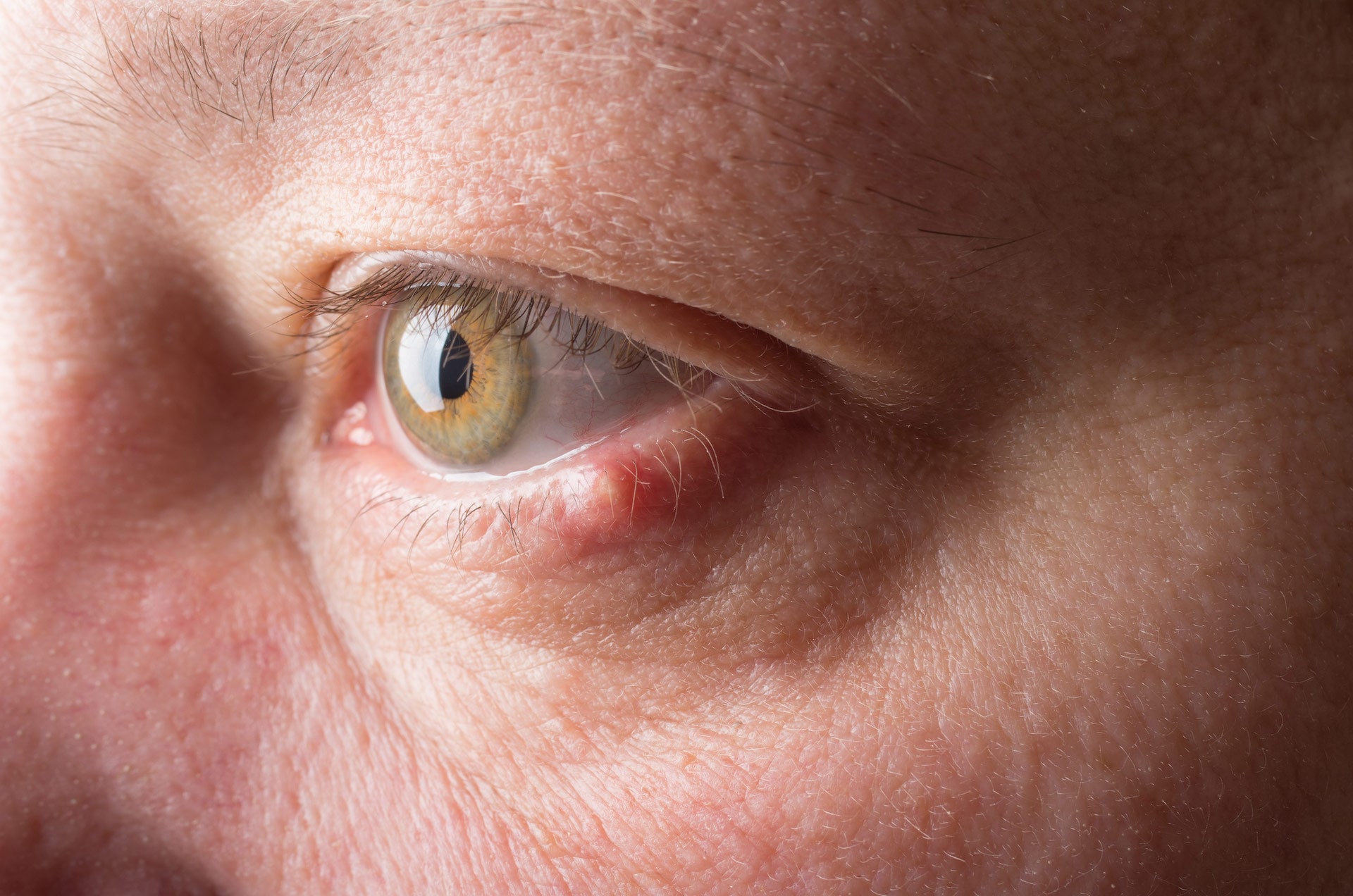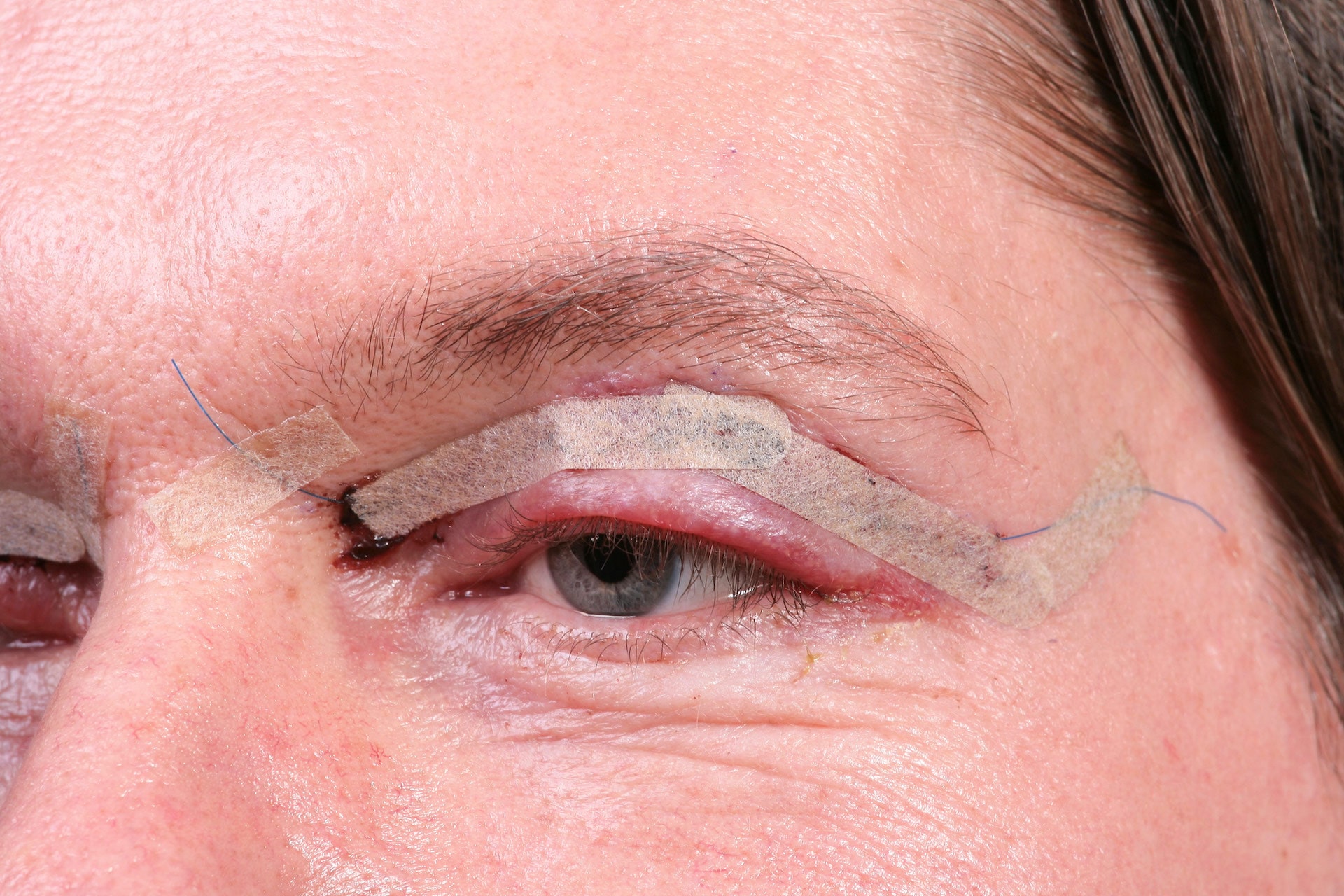Specialized Eye Services
Oculoplastics
What is Oculoplastics?
Ophthalmic plastic surgery, or oculoplastics, refers to the surgical sub-specialty involving the area around the eyes, including the eyebrows, eyelids, eye sockets, tear ducts, and midface. While surgery can be performed for purely cosmetic reasons, it can also be used to address several health concerns and improve vision and quality of life. For example, plastic surgery of the eyelids and brow can help patients see more clearly and look younger. Oculoplastics can also correct defects such as ptosis (droopy eye lid) and dry eyes.
Top Three Oculoplastics Conditions
At Clarity Eye, the top conditions we see in our practice are:
- Entropion / Ectropion
- Eyelid lumps and bumps
- Tearing / Watery eyes

Entropion
Entropion is a condition whereby the eyelid turns inward causing the eyelashes and skin to rub against the eye surface resulting in irritation and discomfort. With entropion, the eyelid – generally the lower eyelid – may be turned in permanently or in instances of hard blinking or squeezing of the eyelid. While artificial tears and ointments can relieve symptoms, surgery is required to fully correct the condition. If left untreated, entropion can cause eye infections, damage to the cornea, and vision loss.
Symptoms of Entropion
- Eye redness
- Eye irritation or pain
- Sensitivity to light and wind
- Excessive tearing
- Discharge and eyelid crusting
- Feeling that something is in your eye
Ectropion
Ectropion, mainly affecting the lower eyelid, is where the lower eyelid droops outwardly from the eye. It's not usually serious but can be uncomfortable and impact the ability to drain tears. This results in red and irritated eyes, a feeling of dryness and grittiness, infections, and excessive watering. In rare cases, a corneal ulcer could form on the eye.

Eyelid Lumps and Bumps
It is not uncommon to find a small bump on the edge of the eyelid at the eyelash line – usually red in colour and may be tender on the touch. In most cases, these are styes, caused by an infection of the oil glands in the eyelid and they disappear on their own 3 or 4 weeks later. When styes become problematic are when they become a chalazion, which happens when the oil gland becomes completely blocked. These cysts can impact vision if they become large enough. Other common causes of bumps include:
- Xanthelasma – these raised yellow patches on your eyelids are common due to aging. While harmless, they can be a sign of high cholesterol, so you should seek medical attention.
- Papillomas – these are harmless, slow-growing pink or skin-coloured bumps. If they affect your vision or become bothersome from a cosmetic perspective, these can be removed surgically.
Symptoms of Styes (Lumps/Bumps)
Besides the red bump, additional possible symptoms of a stye may include:
- A scratchy sensation or feeling there’s is a particle in your eye
- Eyelid tenderness
- Light sensitivity
- Eye tearing

Tearing / Watering Eyes
Occasional eye tearing is normal as it’s the body’s natural mechanism to flush out foreign objects in the eye like dirt, dust, an eyelash or even chemicals, like those given off when we chop onions. Epiphora, the medical term for watery eyes, is when the eye tears persistently or excessively. There are many causes of eye tearing, but often they may clear up on their own with some simple at-home care.
Medical conditions like Bell’s palsy, Sjogren’s syndrome, thyroid issues, chronic sinus infections, and rheumatoid arthritis can cause watery eyes, along with some medical treatments like chemotherapy, radiation, epinephrine, and some eyedrops.
If your eyes tear up persistently and you don’t know why, these are some common causes:
- Allergies
- Blepharitis
- Blocked tear duct
- Corneal abrasion
- Corneal ulcer
- Dry eyes
- Ectropion
- Entropion
- Foreign object in eye
- Ingrown eyelash
- Pink eye
- Tear duct infection
- Thyroid problems

Top Three Oculoplastics Procedures
The top oculoplastics procedures we perform are:
- Lid tightening
- Chalazion
- Cosmetic blepharoplasty
Lid Tightening
Lid tightening is the most common of the oculoplastics procedures we perform. The surgery is done on an outpatient basis with a local anesthetic to numb the surgery area. An incision is made to remove excess tissue from your eyelid which helps tighten the eyelid so that it moves back to the normal position. The incision is then closed with stitches. An eye patch may be required for overnight wear to protect the eye and then antibiotic ointment will be required to apply for approximately one week following surgery. Bruising and swelling are not uncommon for up to two weeks post-surgery.
Chalazion
If a chalazion doesn’t go away on its own, surgical removal may be recommended. This is a safe and quick procedure that is performed under local or general anesthetic, contingent on an individual’s personal health situation. Depending on the size of the chalazion, a small incision is made to the inner or outer eyelid to scrape out the contents of the chalazion. Once removed, the incision is closed without stiches the majority of the time. Post-procedure, antibiotics, and sometimes steroid cream will be prescribed to curb infections and any inflammation caused by the procedure. Recovery time is approximately 7 to 10 days.
Cosmetic Blepharoplasty
Blepharoplasty is a surgery that repairs droopy eyelids. As we age, our eyelids stretch and the muscles supporting them weaken so even if vision is not impacted, there is an option to have the excess skin, muscle, and fat and removed surgically, resulting in a much more youthful look. Cosmetic blepharoplasty can be performed by both plastic surgeons and oculoplastic surgeons.
An oculoplastic surgeon is an ophthalmologist who has performed only eye surgeries even before training in oculoplastics, so their experience is much more intensive and concentrated in this delicate area of the eyes and face. An oculoplastic surgeon begins their certification after completing five years as an intern and resident in ophthalmologic surgery. Because these surgeries are so delicate and finite, they are already well-prepared for the additional one to two years of training required in aesthetic and reconstructive procedures focused solely on the eye area and upper face. An oculoplastic surgeon is dedicated to the eyes and lids only, so keep that in mind when you’re deciding on a cosmetic eye care procedure. To learn more about the oculoplastic surgery options we offer, or at our sister company, Lumea.
What to Expect Post-Surgery for all Three Oculoplastic Surgeries:
Recovery usually takes 7 to 10 days for the surgical incision to heal. As part of the recovery, we advise that you avoid the following:
- Rubbing/touching eyes
- Applying any eye makeup
- Getting water in your eyes when showering
- Swimming
- Wearing contact lenses for at least one week
- Any activities that could cause injury to the eye for a minimum of two weeks

